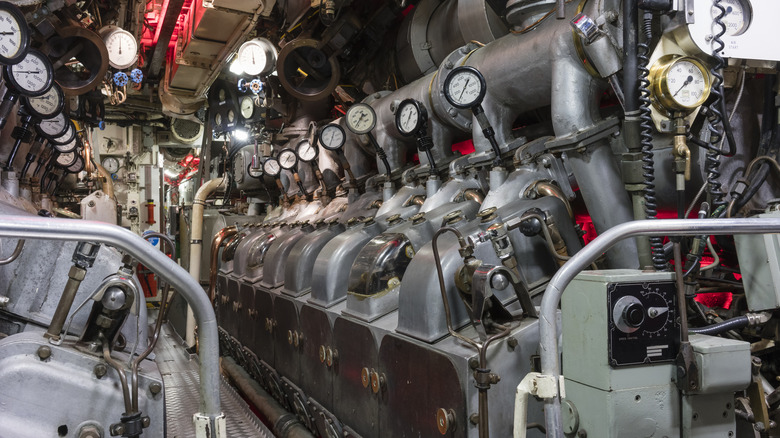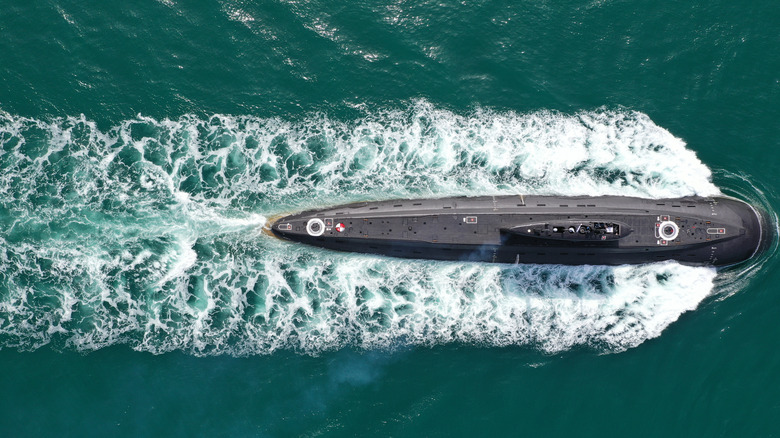Here's How Diesel Submarine Engines Work Underwater
Did you know naval submarines come in more than one variety? Of course, there are several classes of nuclear sub out there (Ohio, Los Angeles, Seawolf, Virginia), but not all militarized undersea vessels run on fission. Diesel-powered submarines also exist, with their own advantages and disadvantages to work with or around.
Diesel subs are much cheaper to produce, with one costing roughly half or even a quarter of what's needed to manufacture one nuclear-powered counterpart. They're also less noisy than nuclear subs (as odd as that may seem), which need to keep their engines running — and thus making noise that could potentially be detected — constantly. On the other hand, diesel subs aren't as fast and require refueling, while a nuclear sub can go for literal decades without needing to gas up.
While it's true that diesel submarines do have limitations because of their specific approach to power, they do work and are still a part of many navies around the world today. They just don't possess the kind of set-it-and-forget-it energy production of a nuclear reactor.
A need to breathe
The short version of how diesel submarine engines work underwater is that they actually kind of don't. Not in a traditional sense, anyway, due to the lack of oxygen needed to operate. Because they're underwater. Instead, they act as a part of a hybrid energy system connected to a large bank of batteries.
These engines can (and sometimes do) directly power various aspects of the sub, but their primary function is to charge the batteries that act as the main power source for regular operations — hence why they're so much quieter than nuclear models. The trade-off is that those toxic, fume-spewing diesel engines can't do their thing when they're several hundred feet beneath the ocean surface.
This means that the sub will occasionally have to surface, or get close enough to the surface to extend a "snorkel," to get access to the oxygen the engines need in order to run. And being a vessel primarily designed for stealth, you can imagine why this would be a bit of a drawback. Since the engines can be used to operate the propellers (and other systems), the sub does at least have a way to keep moving while it recharges its batteries, but it can't stay submerged for several weeks straight like a nuclear sub, and it needs to refuel regularly.

